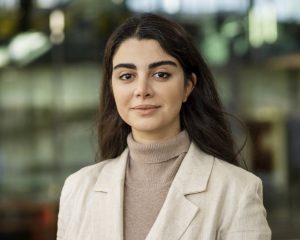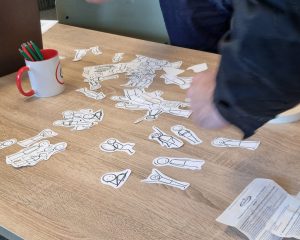Using technology to tackle low literacy
Hi, I’m Jessica Goss and, as a visual designer, I have always dedicated my efforts, creativity and abilities to developing something meaningful for people, using my knowledge to make people’s lives better. With that in mind, after I finished my master’s degree, I developed a mobile game with the COVID-19 pandemic as the background.
The experience of creating a mobile game that had such success in my home country of Brazil made me think that maybe this could be the right path for me: finding a way to put together my skills and my desire to change people’s lives through design. That was one of the reasons that led me to apply for an EngD position at TU/e to work in the Emergence Lab at Eindhoven Engine on Low Literacy and the Future of Work projects.
Focus within low literacy
Nowadays, almost 2.5 million people are low literate just in the Netherlands and this number is increasing over time. It is known that there are different types of literacy, but we are focusing on reading and writing abilities since these are the main forms of communication and access to knowledge in contemporary society. On top of that, there is a shortage of teachers for all these people, so we should use technology such as Artificial Intelligence, digital games and social media to tackle this problem. However, low literacy, as you might imagine, is a complex problem. Choosing a traditional way of designing is not the right decision.
I have always dedicated my efforts, creativity and abilities to developing something meaningful for people, using my knowledge to make people’s lives better.
Using design thinking
Up to this moment, I have been studying in order to better understand this issue, following design thinking steps as an approach. At the same time, I am learning how to develop a way of thinking that is systemic and takes into account the complexity of this wicked problem. I am being supported by an excellent team of teachers and I believe that the EngD program is helping me to have access to the latest research in AI interaction and user experience, guiding me to become a more human and complete designer. Regarding the language (you might be asking yourself), since I don’t speak Dutch (yet), I am following interviews by Dutch students with the target group to get information on how we can develop a solution that really will help them.

Finally, my next steps will be developing a prototype to be tested with the target group until the end of the year and then making the necessary changes to adapt to their needs. Also, I wish to extend this project to my home country and – why not? – more countries.
Vacancy next EngD trainee on Low Literacy

Eindhoven Engine News – May 2023
In this edition of Eindhoven Engine News: Innovator Jesper Pilmeyer in the Spotlight, Using technology to tackle low literacy, Project VIPNOM welcomes Devansh Kandpal and more!
What else is happening at Eindhoven Engine?
Using technology to tackle low literacy
Hi, I’m Jessica Goss and, as a visual designer, I have always dedicated my efforts, creativity and abilities to developing something meaningful for people, using my knowledge to make people’s lives better. With that in mind, after I finished my master’s degree, I developed a mobile game with the COVID-19 pandemic as the background.
“I envision this configurator as something we will use here at Sorama to configure our products for different settings, for example smart stadiums, busy streets and probably more.” Devansh’s prior educational experiences include a BSc in Computer Science & Engineering from Punjab Engineering College, Chandigarh, India, and a MSc in Sound and Music Computing from Aalborg University Copenhagen, Denmark. He has also worked in various IT roles with firms like JPMorgan Chase, Shell and Bosch.
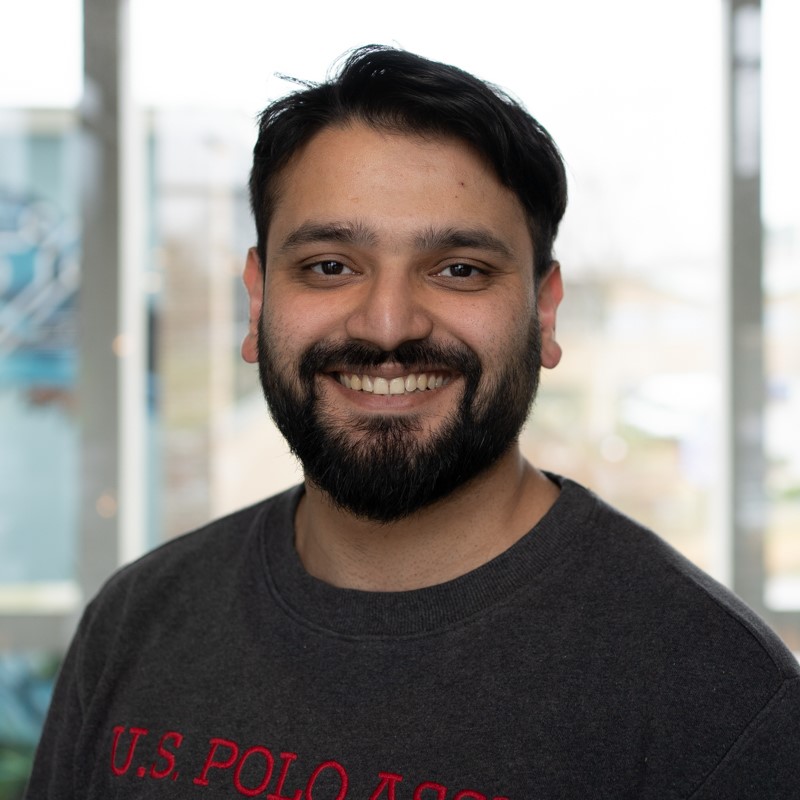
“I’m glad to be a part of this exciting setup here in Eindhoven,
and I look forward to meeting you soon!”
Devansh Kandpal I EngD trainee VIPNOM project
Using technology to tackle low literacy
Hi, I’m Jessica Goss and, as a visual designer, I have always dedicated my efforts, creativity and abilities to developing something meaningful for people, using my knowledge to make people’s lives better. With that in mind, after I finished my master’s degree, I developed a mobile game with the COVID-19 pandemic as the background.
In 2019, I started my PhD, after which we initiated a clinical study called Neurotrend in collaboration with Philips and the epilepsy centre Kempenhaeghe. Neurotrend is one of the first Eindhoven Engine OpenCall projects.
Predicting the clinical outcome
This study is aimed at predicting the clinical outcome (i.e., the course/development of a disease) of people with depression based on MRI scans. More specifically, we obtain structural, functional (activity) and vascular MRI scans of the brain of subjects with and without depression at the beginning of the study and after a year. During the one-year period, we monitor their depression symptoms and cognitive ability. In this way, we can predict how the depression will develop over time based on the first scans but also evaluate brain changes over a year and correlate this to symptom changes. The clinical study was ethically approved in 2021 and its data acquisition is almost finished at the time of writing.

Preliminary results
From the preliminary results, we can conclude that brain activity patterns and interaction between brain networks is time-varying and that including this neurodynamic nature in a model improves the prediction of depression symptom severity changes over time compared to more standard/static approaches (brain activity/synchronicity over the whole functional MRI scan). Moreover, we demonstrate that a relatively novel MRI acquisition method, called multi-echo multiband imaging, increases the functional MRI signal quality and improves, amongst other things, the temporal resolution. This is beneficial as it allows us to more reliably model network interactions. Another interesting finding was the fact that brain volume and tissue properties of several limbic structures, which are known to be involved in emotion processing, also have predictive value for clinical outcome in depression. A smaller amygdala (associated with fear processing) volume correlated significantly with a higher number of lifetime depressive episodes.

Improving the models and interpreting clinical meaning
In the last period of the PhD, I will focus on improving the models and interpreting the clinical meaning of these results, which will further help in understanding the aberrant brain mechanisms in subjects with depression. We hope to show other researchers the direction in which we think future MRI studies related to psychiatric disorders should head. Taking into account the complex, dynamically interactive brain while implementing the aforementioned MRI acquisitions could lead to more replicative results, especially if carried out in studies with a larger sample size. Even though we will not yet be able to apply these models in the clinic to support (still subjective) clinical decision-making, we are contributing significantly to existing depression-related MRI research. We have demonstrated the potential of state-of-the-art analyses and acquisitions in combination with a multi-modal MRI-based longitudinal study for depression diagnosis/prognosis purposes.
Using technology to tackle low literacy
Hi, I’m Jessica Goss and, as a visual designer, I have always dedicated my efforts, creativity and abilities to developing something meaningful for people, using my knowledge to make people’s lives better. With that in mind, after I finished my master’s degree, I developed a mobile game with the COVID-19 pandemic as the background.

Eindhoven Engine News – May 2023
In this edition of Eindhoven Engine News: Innovator Jesper Pilmeyer in the Spotlight, Using technology to tackle low literacy, Project VIPNOM welcomes Devansh Kandpal and more!
What else is happening at Eindhoven Engine?
Sustainable mouth/nose mask consortium successfully concluded
In January 2021, Eindhoven Engine began a consortium with SionBioText BV, specialist in FFP2 mouth/nose masks, and research institute TNO to develop and test a sustainable FFP2 mouth/nose mask for healthcare: the ProM mouth/nose mask.
Impression photo
Our motivation was the global supply problem of FFP2 masks at the start of the corona pandemic in 2020 and the environmental impact of these masks. With the ProM mouth/nose masks, Europe no longer has to depend on the supply from Asia because the production of these masks takes place in Europe and can be quickly scaled up, while the FFP2 masks are also more environmentally friendly throughout their lifespan. This project was successfully concluded at the end of 2022 and was supported by Small Business Innovation Research (SBIR) of the Netherlands Enterprise Agency and the Ministry of Health, Welfare and Sport.

Sustainable, lighter and high comfort
ProM mouth/nose masks are incredibly sustainable as they are made almost entirely (95%) from renewable, biological resources: PLA with bio-based polypropylene (PP) for filtration and recycled steel for the nose bridge. In addition, the mask is about 30% lighter than regular mouth/nose masks made of polyphenylene ether (PPE), requiring fewer raw materials to produce the mask. Last but not least, the mouth/nose mask is also highly comfortable to wear. From mid-2024, the production of these masks will take place entirely at co-developer and manufacturer SionBiotext BV in Maastricht, thereby ensuring better security of supply.
“During the corona epidemic, it was all hands on deck, focused on the short term. Together with the other project partners, TNO is proud to have now also contributed to a more sustainable and structural solution for personal protection during epidemics.”
Certification and market readiness
This consortium worked on a prototype FFP2 mouth/nose mask, successfully testing its (technical) feasibility, business case, wearability and contribution to sustainability. In the final phase of this project, a lifecycle analysis (LCA) was also performed for the mask. The analysis proves that it is possible to develop and produce an FFP2 mouth/nose mask made of PLA and bio-based PP. Among other things, the LCA tests show that these masks have some 72% lower CO2-related environmental impact throughout their lifecycle compared to a conventional PPE mouth/nose mask. The next step is to certify these masks.
Due to these positive results, consortium partners Eindhoven Engine, SionBioText BV and TNO are looking ahead confidently to the next phase of the SBIR development process in which the certification and production of the ProM mouth/nose mask can take place. The partners are currently engaged in talks on certification and on delivering the first certified mouth/nose masks.
Are you interest to join the next phase?
Using technology to tackle low literacy
Hi, I’m Jessica Goss and, as a visual designer, I have always dedicated my efforts, creativity and abilities to developing something meaningful for people, using my knowledge to make people’s lives better. With that in mind, after I finished my master’s degree, I developed a mobile game with the COVID-19 pandemic as the background.
Let’s disrupt 2023 lunch
“It is so nice to get acquainted with the Eindhoven Engine projects, which are very diverse in terms of technical subjects,” says Janne. “Being engineers, we like this! In other respects, the projects are very similar: the energy and inventiveness are high. And also the involvement with each other, as shown, for instance, in the 5-weeklys.”
What also became clear in the past two months is that it is getting busier and more dynamic at our beautiful location in Disruptor. It is often a puzzle to find a workplace or workshop space for everyone with the increasing number of activities of projects and student groups. How different this was only half a year ago. It means a lot to us as the Eindhoven Engine core team: now that the COVID time is definitely behind us, we see the fruits of our efforts to turn our offices into a vibrant innovation location.
We are also making plans for the future: Maarten (Steinbuch, scientific director at Eindhoven Engine) and Janne are busy working out two scenarios for the future of Eindhoven Engine, aligning with the Brainport agenda and in close consultation with our critical friends. More on this later in the year. Stay tuned!
Events in January and February 2023
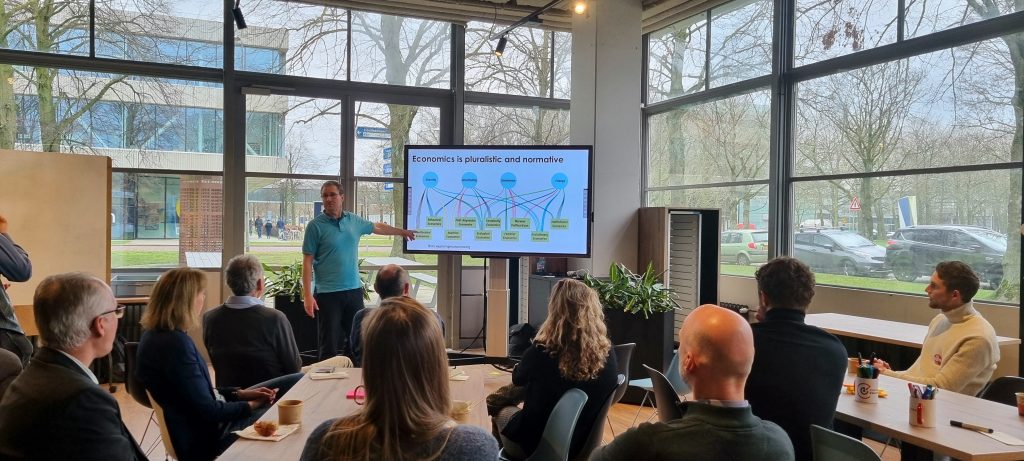

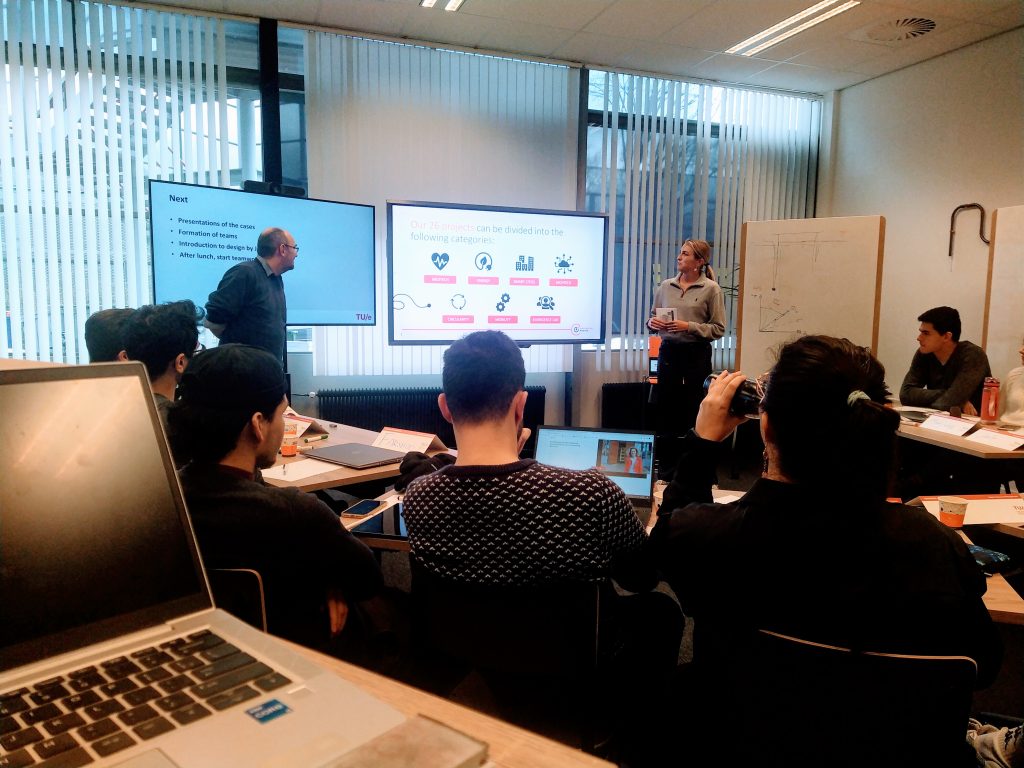
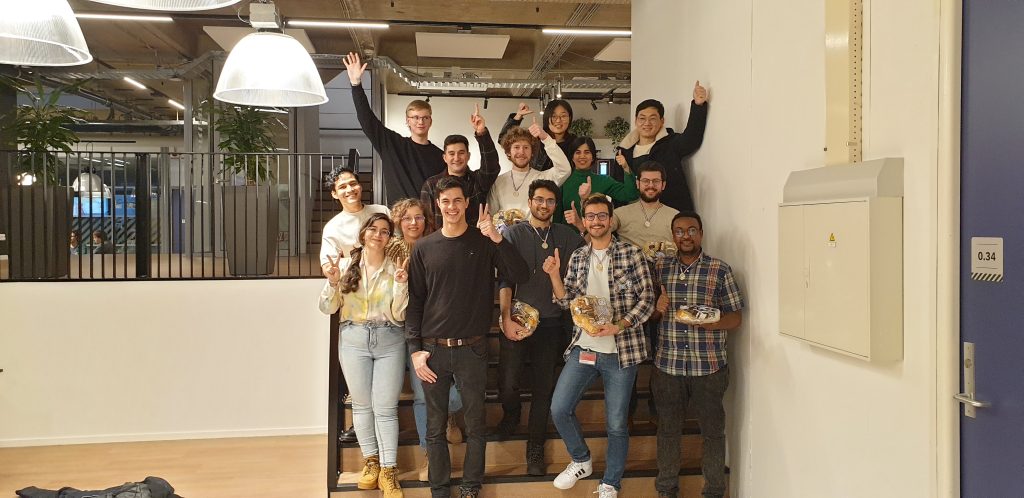
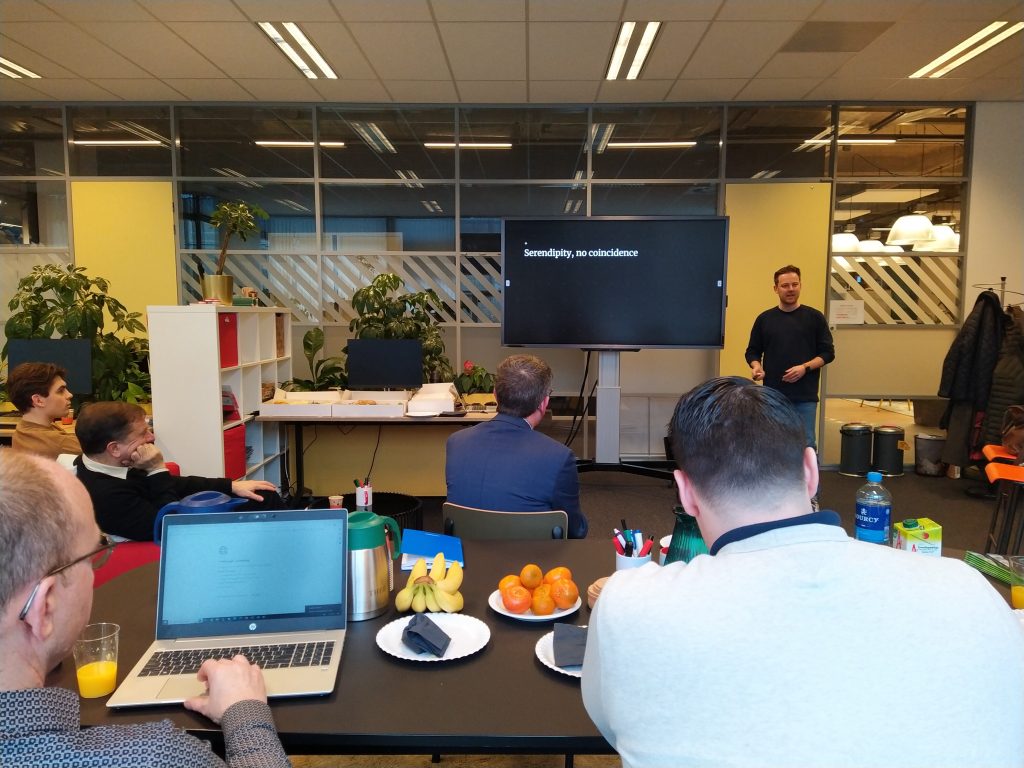
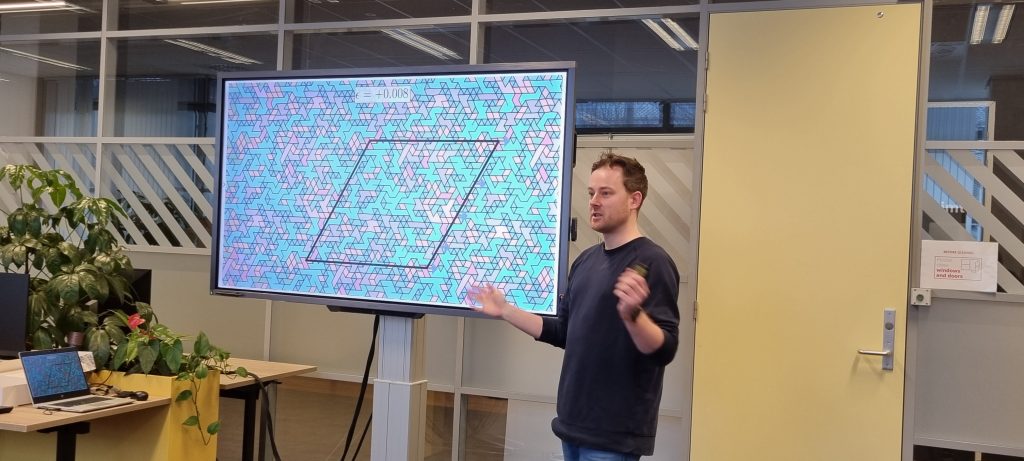
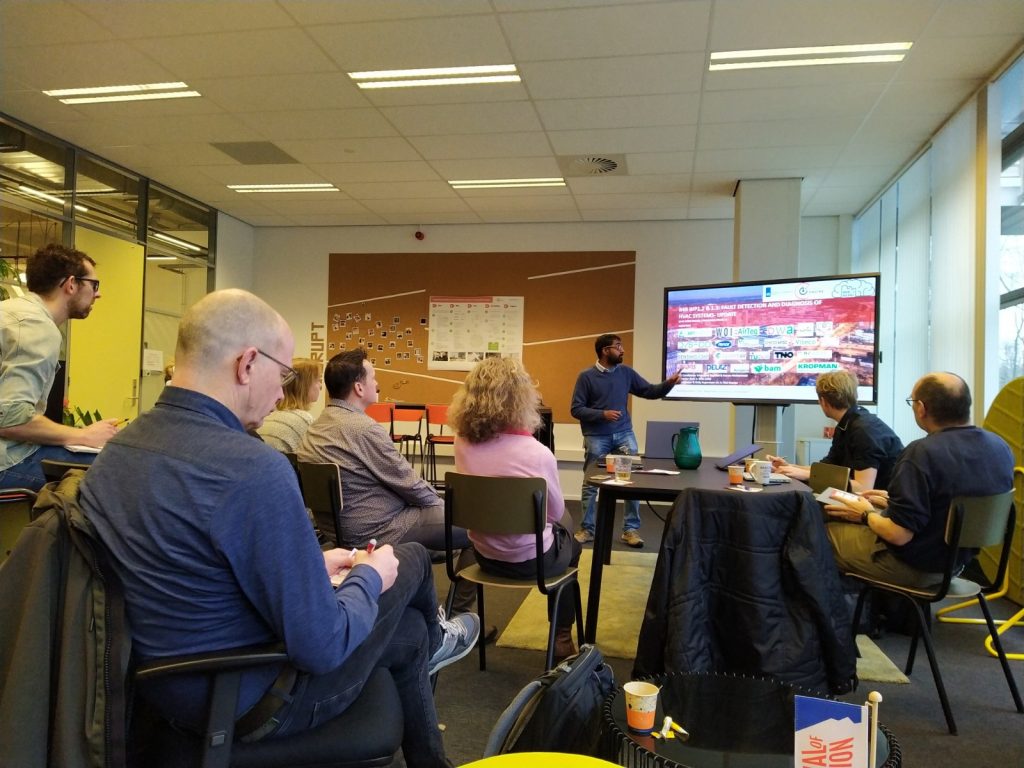

A simulation of emergency vehicles in connected and autonomous traffic
Part of the SmartTwo+ project
Meet Giel Oosterbos. Giel is an EngD graduate of the Smart Cities and Buildings EngD program and does his graduation assignment within Eindhoven Engine project SmartTwo+.
Traffic in the built environment has more and more access to linked open data. Through smart use of communication between vehicles and road network the traffic flow can be improved. The SmartTwo+ project investigates the possibilities of this improvement. How will road traffic evolve in the future and how can emergency services benefit from this evolution? I’m Giel, an EngD graduate from the SmartTwo+ project, and these are the overarching questions that have been puzzling me for the past two years. There is a broad consensus that road traffic will radically change in the coming decades.
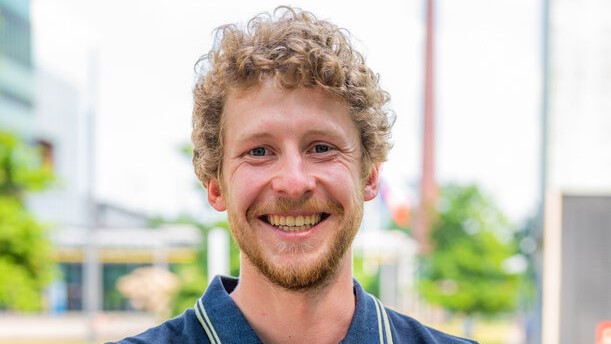
On the one hand, vehicles will be enabled to talk to each other and to the road infrastructure, constituting a connected traffic system. On the other hand, vehicle-driving functions will be increasingly automated on the path to fully autonomous vehicles. These transitions are expected to reduce the number of road accidents drastically, resulting in fewer road deaths and serious injuries. This is specifically relevant to emergency services as their operation typically entails high-pressure situations involving many risks.
Research in communication devices
In my research, I proposed three applications that employ communication devices to reduce the response time of emergency services and improve their safety in traffic. The first two applications were evaluated in large-scale simulations performed with the Simulation of Urban Mobility (SUMO) traffic simulator. The third application was tested in the realistic 3D traffic environment provided by CARLA, utilizing the Autoware.auto autonomous driving software.
Application 1
The Traffic Signal Priority Service allows emergency vehicles to request absolute priority from intelligent Traffic Light Controllers. This removes the need for emergency services to violate red traffic lights and was shown to increase their speed by roughly 20% with a minor impact on traffic flow.
Application 2
The Vehicle Rerouting Service redirects other traffic participants away from the emergency route, reducing the local traffic density for emergency services. The reduction in interactions with other vehicles improves safety and results in a decrease in emergency response time, which is similar to the Traffic Signal Priority Service. However, its negative impact on the traffic flow was found to be much larger.
Application 3
The Maneuver Coordination Service is designed to prioritize emergency vehicles at unsignalized intersections. This service requires that all vehicles involved share their current status and can autonomously adapt to a proposed trajectory.
Vision Zero
The investigation resulted in a formula to determine the minimum range at which the emergency vehicle should request its priority depending on the specific circumstances at the intersection. For the past two years, I have immersed myself in studying connected and automated mobility. I now consider it a crucial development in achieving Vision Zero by reducing the number of road deaths and serious injuries to nearly zero by 2050. At the same time, the Smart Cities and Buildings EngD program expanded my view and helped me to become a more confident professional. Soon, I will leave for a thrilling adventure in Nepal and plan my next career steps!
“My investigation resulted in a formula to determine the minimum range at which the emergency vehicle should request its priority depending on the specific circumstances at the intersection.”
The built environment is responsible for about 36% of the global energy demand. About 5-30% of the energy use of buildings is related to energy waste due to faults in heating, ventilation and air conditioning systems. The goal is to develop a self-learning module that can monitor and diagnose climate systems in large buildings.
Generic, robust and reliable fault detection & diagnosis tool
Rick Kramer is the leader of this project and Srinivasan is one of his PhD candidates. Srinivasan is focusing on developing a generic, robust and reliable fault detection and diagnosis tool that can help with the early detection of these faults and eliminate energy wastage.
Personalized control system in an office environment
Within this project, EngD trainee Petros is focusing on the people within large buildings. He is doing research on the control and functionality of a personalized control system that people will be able to use in their office environment to tailor it according to their needs and preferences.
